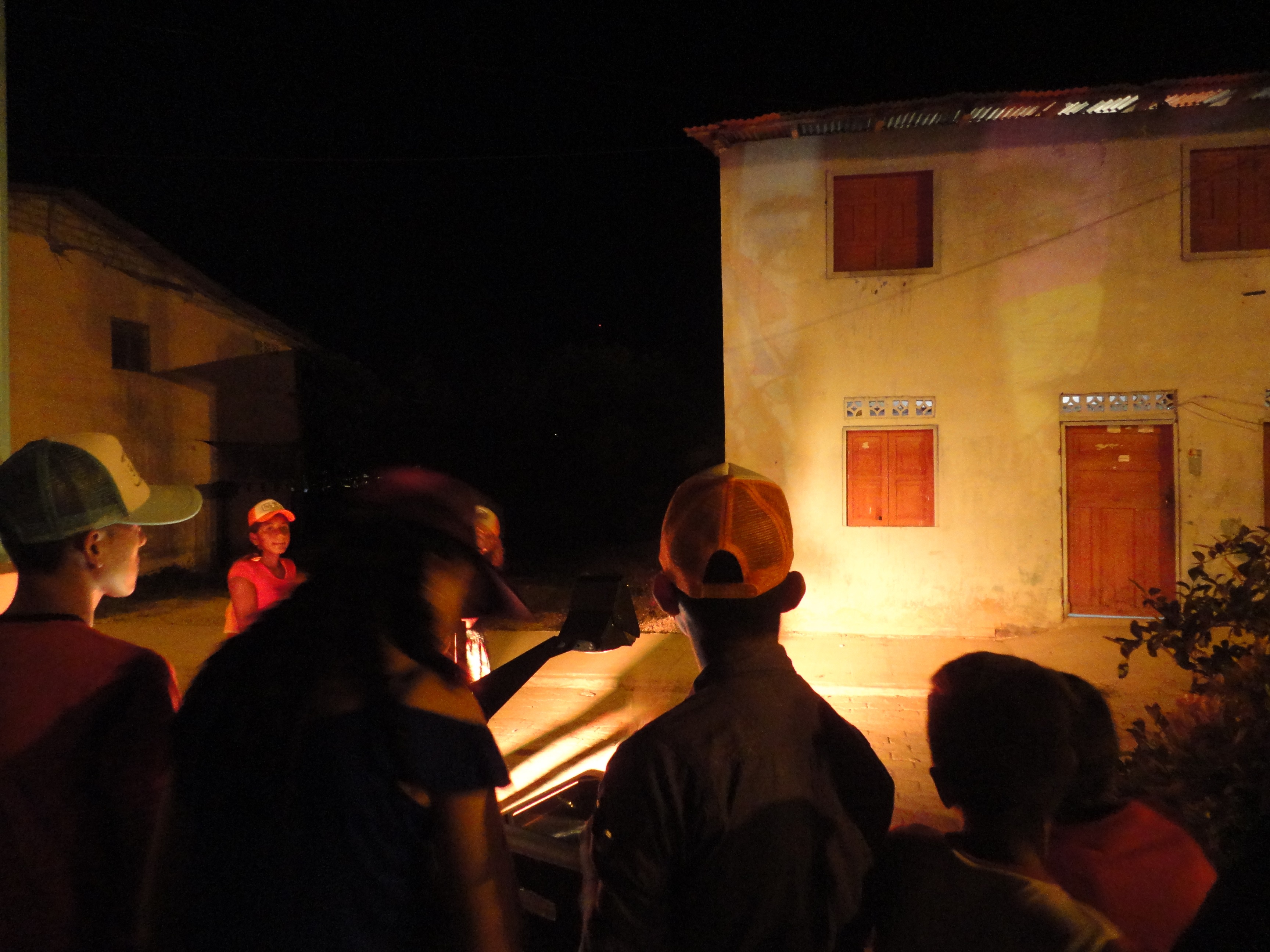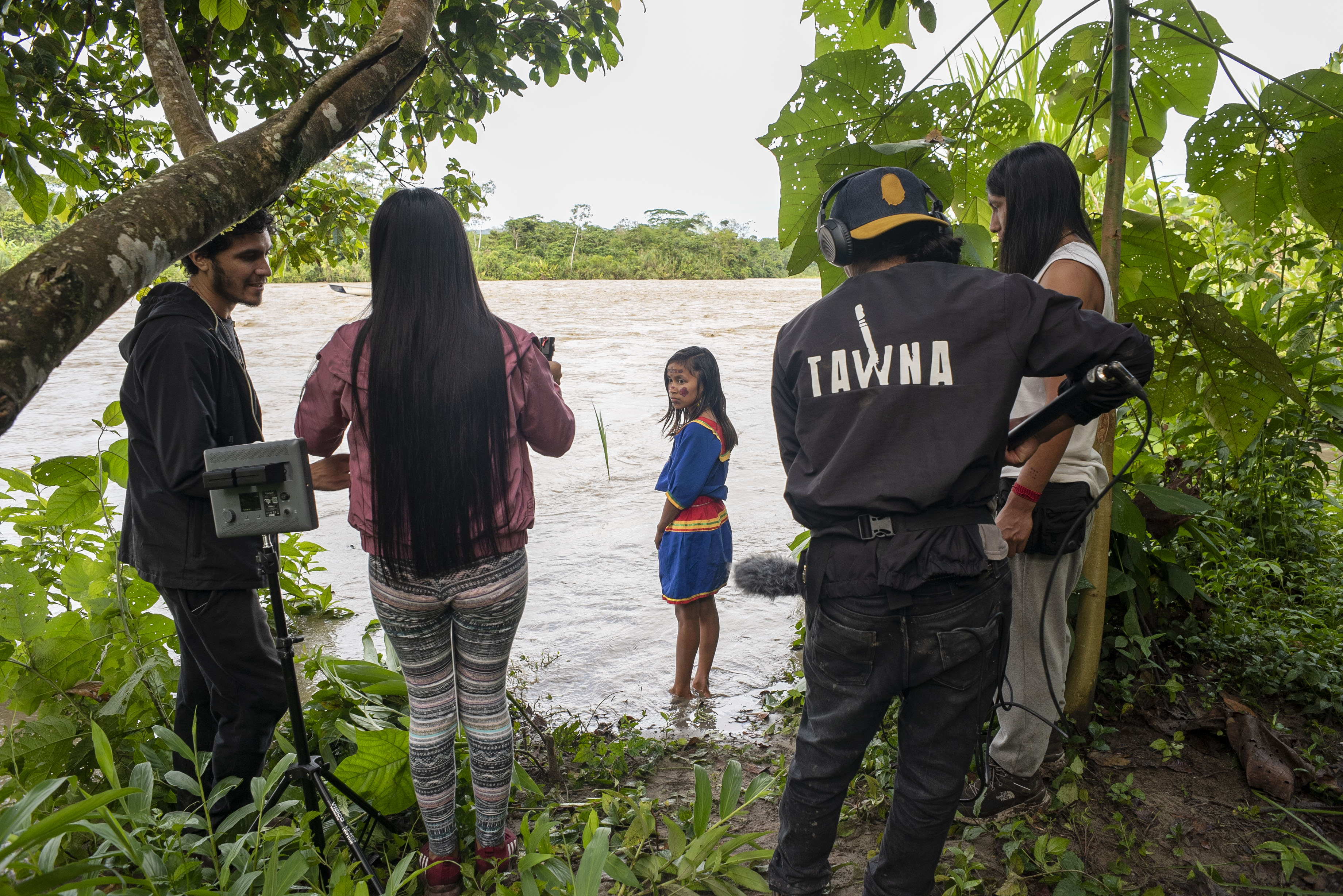Anamaría Garzón Mantilla: You both come from very traditional western schooling, when you began to work together in this exhibition you also began to connect with the community. As a result, they are rethinking their own education and finding another way of working where they enter into ways of dealing with the stories, legends, and myths of their communities. What was it like for you to learn to understand this method of working?
Educating from Authenticity, Love and Sensitivity
Warmi Muyu is a collective of women artists from different indigenous peoples of Ecuador and Colombia, including the Kichwa people settled in the northern highlands of Ecuador and the Inga-Kamentsa people located in Putumayo Colombia. They understand art as a possibility to transform, propose and create new interrelational dynamics, based on community dynamics and practices as fundamental elements for artistic production.
Learning from the community
Manaii Kowi: For me, giving workshops was an apprenticeship. We had that process in a one-day workshop with children, in which we worked based on the myths that exist in Imbabura. It was nice because we gave them the opportunity to create, and for them it was very exciting to create characters that were not alien to them because they were mythologies of their own, and they imagined how they are. And then, the experience of seeing their work exhibited there with us. But we were also nervous because we didn't know how people were going to receive the exhibition because the proposals shown there were contemporary art... But it was very well received, people got hooked and got involved with us.
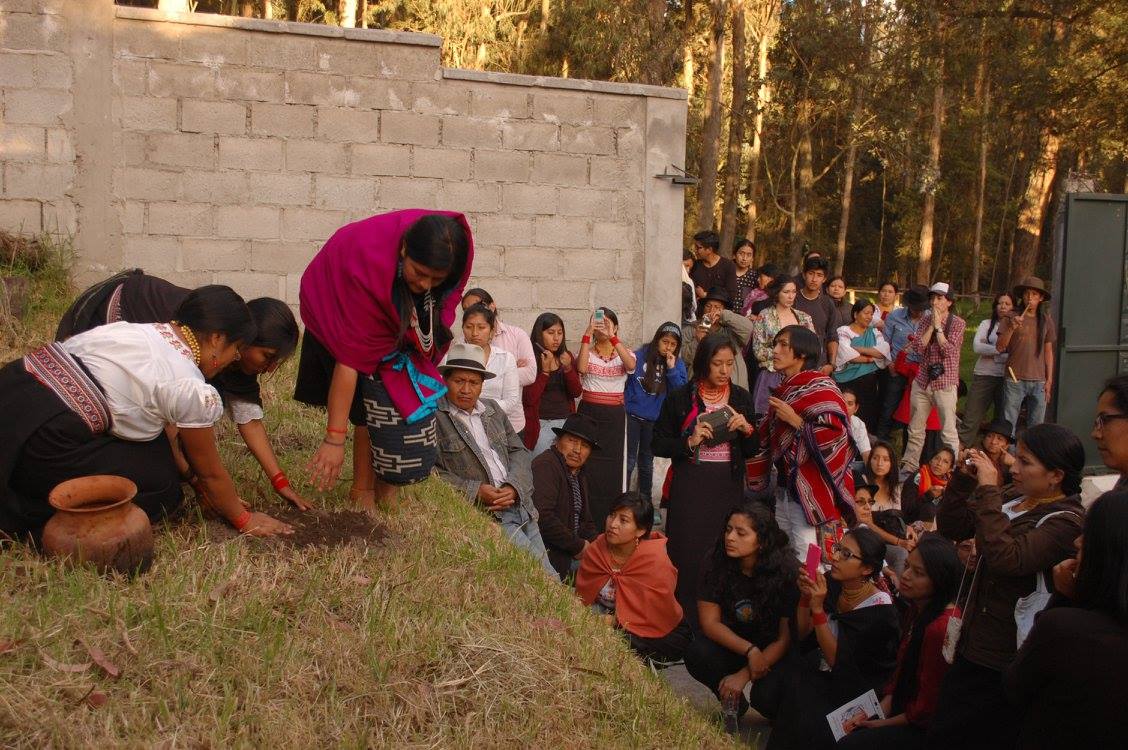
Courtesy: Warmi Muyu.

Courtesy: Warmi Muyu.
After this exhibition in Peguche, your next big project was the meeting you organized with women artists from indigenous peoples and nationalities of Abya Yala. How did you go from a, let's say, a small, contained exhibition to organizing a transnational meeting that has a different scope and thrust?
MK: We went little by little: first there was that exhibition, then we decided to exhibit also in Quito, which we felt very necessary, because at that time there were no spaces for us as artists of indigenous peoples and nationalities; now I see that there is much more openness. It was a whole process of walking, and from there we said to ourselves: hey, why not expand these debates that are taking place here in the country to the Latin American level, why not get to know what they are debating and proposing in Abya Yala? So we decided to launch the first meeting of women artists from the peoples and nationalities of Abya Yala, for which we received funding from the State. It has always seemed important to us to recognize all artistic work, because unfortunately in the country it is still not recognized, art is seen as a hobby.
Gabriela Remache: In my case, I am from Quito, my grandparents migrated to Quito, and for me art has been a mechanism to identify myself, to root myself, so I have been in a constant search. When I became part of this collective of women artists, I see that from this identity we reinforce concepts or worldviews that, somehow, remain marked in our family environments, which are not lost even if you are in another country or in another city. Then, at the moment of integrating this collective, everything began to be strengthened: sharing and exchanging this knowledge, saying that this exists and this is strong. Personally, this was structuring and clarifying much more of the memory that was present. And, of course, it was a different conflict here because, first of all, it is the city, and there are other traditions, but even so, these mixtures are maintained. It is always present where I come from, why I believe in these deities, why I believe a lot in the land, and why the communities defend the land. From there these visions began to be strengthened and the communities offered us all that knowledge and power. Then I understood that if you find something that you like, that has a meaning, you need to defend it and keep sharing it with people to strengthen those principles. I believe that art has the capacity to be insurgent, to always motivate or point out something that is wrong in society, or maybe highlight more human things. I think it is the language of the whole universe of human beings. We, as a milieu or community that has had several significant events in history, I believe that art has been a way to highlight those problems and also to heal.
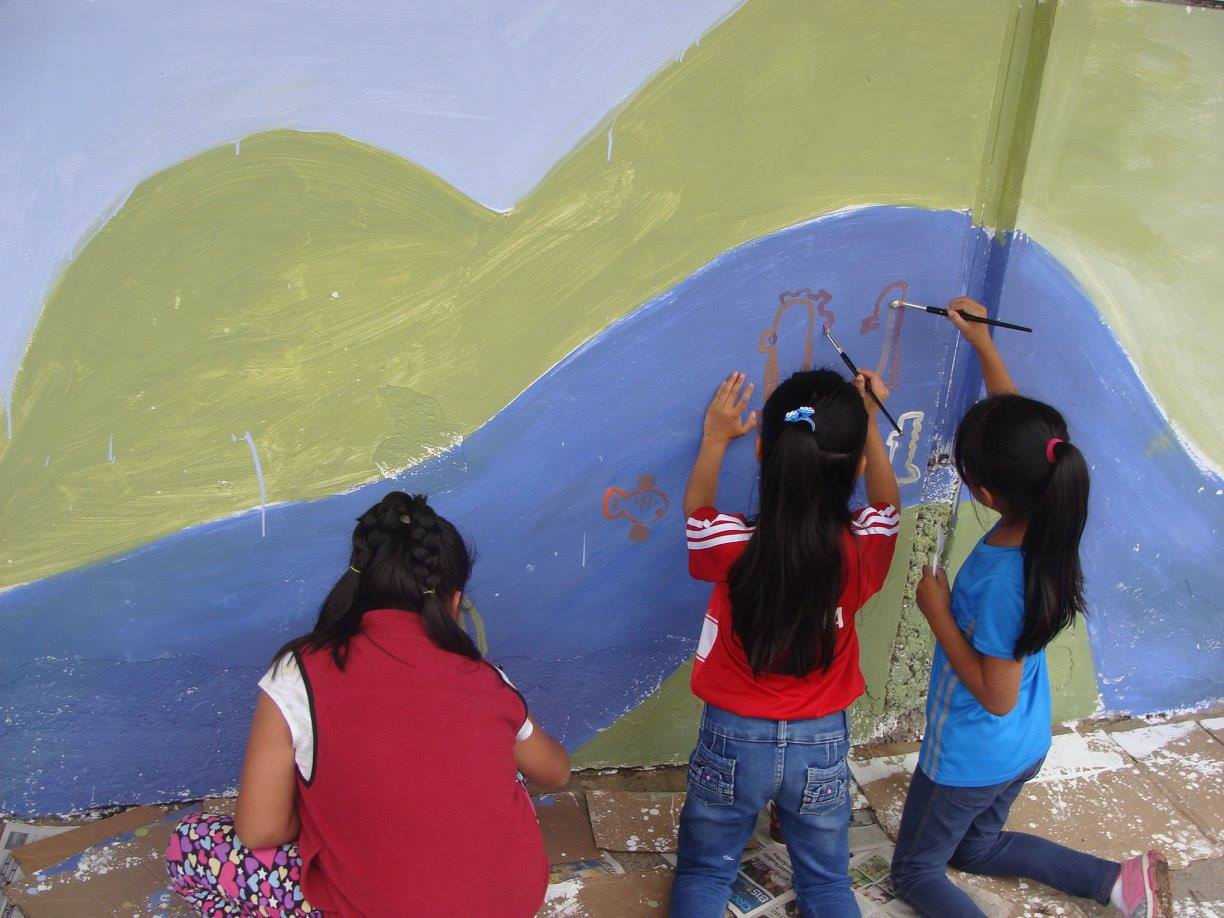
Intag Peñaherrera workshops.
Courtesy: Warmi Muyu.

Intag Peñaherrera workshops.
Courtesy: Warmi Muyu.

Intag Peñaherrera workshops.
Courtesy: Warmi Muyu.
MK: It has seemed important to us, when we give workshops, the way in which we link with the community, to get to know their realities. We have given workshops in Inta, in the Cordillera del Cóndor, in Gualaquiza, and the unfortunate reality of these communities is that they are facing an extractive, mining, and oil invasion in their territories. It has also been a learning experience because you can belong to a people but not know what other peoples are proposing. So it seemed to us that art could be a mechanism with which we could raise awareness and work, especially with children, about the importance of defending those territories, and why their fathers, mothers, grandfathers, grandmothers, uncles, and aunts are defending those territories. So we gave, for example, a workshop that ended in a mural made by the children, and another one where they made banners in defense of their territory, and they were stunning.
What changes for this second meeting you are organizing? That is, what is the approach you are taking, what do you think you have learned, and how are you shaping it this time?
MK: In this second meeting, we have made progress in the recognition of payment. I think this has to be established, not only among us but at a general level. I, for example, have participated in exhibitions where this is not the case, but I think it is important that this is done because we artists do not live off air. We have also tried to give an opportunity in this meeting to emerging artists who may not be well known in the circuit but we think it is important to include them.
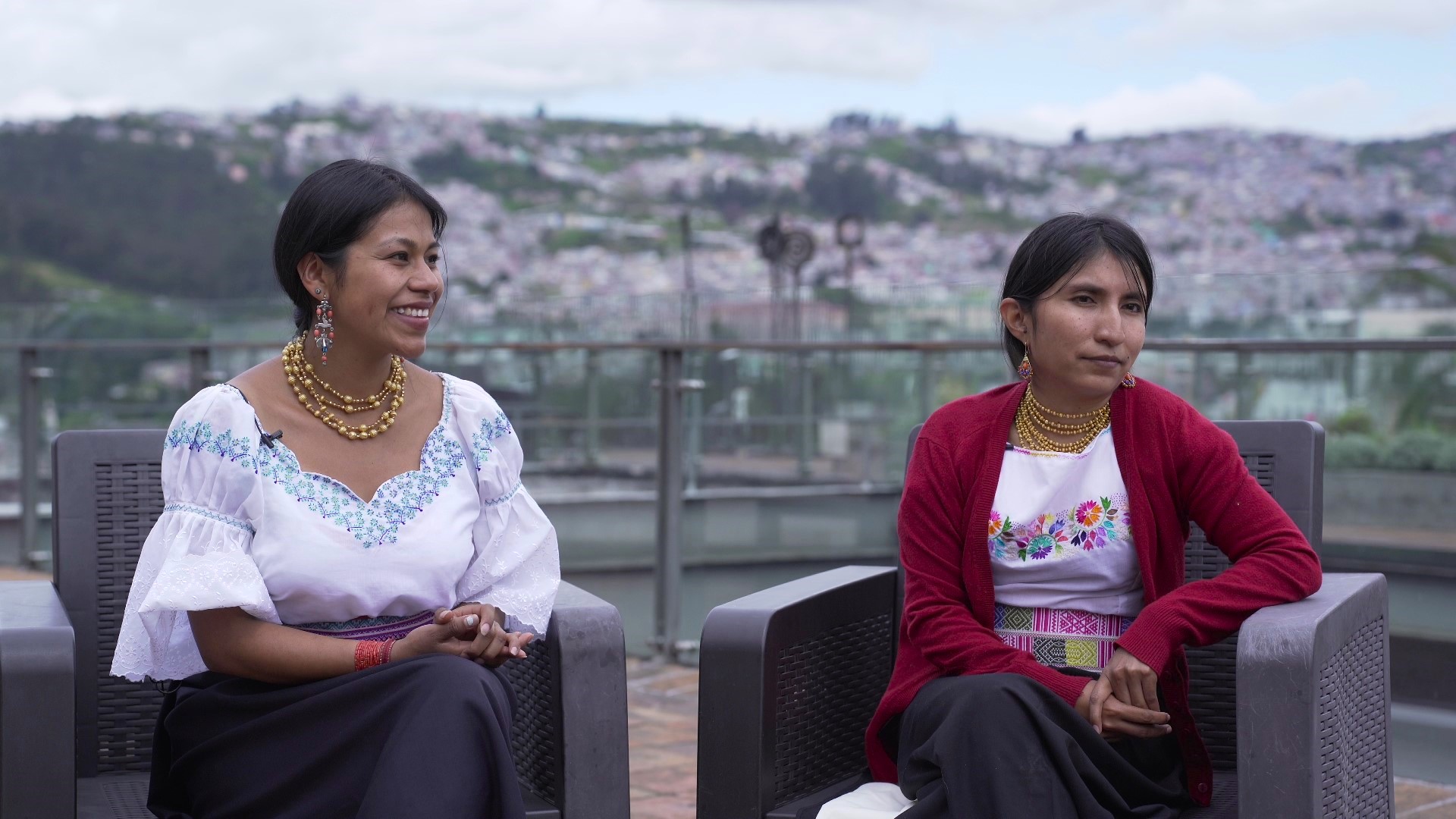
Manaii Kowi and Gabriela Remache.
Conversations (LA ESCUELA___, 2023).
Community-based methodologies
What are the methodologies you use to approach these creatures you work with?
GR: The work we have done has always been to be aware of community practices and combine them with artistic practices. We have focused more on teaching children, through experimenting and creating in the communities. One example is the work of the minga, to make it, let's say, a moral minga: to build everything from morality, from an idea, from an objective; then it is a construction more of talking, of drawing, of seeing that everything has a meaning on that wall. Another practice we have done is to feel the earth. Also installations and other artistic methodologies but adapted to the community and its themes. We have made drawings with earth, spoken stories… Orality is very fundamental in this teaching methodology, sharing and identifying in this telling of stories codes that are in reality, and drawing them; it is a methodology that we learned from our communities as well as from our artistic experience.
The methodology is also to liberate a little bit the sensibility or the unblocking of thought through drawings. Another thing that I really like to work with the children is the natural inks, which we make with them through gathering and then we paint.
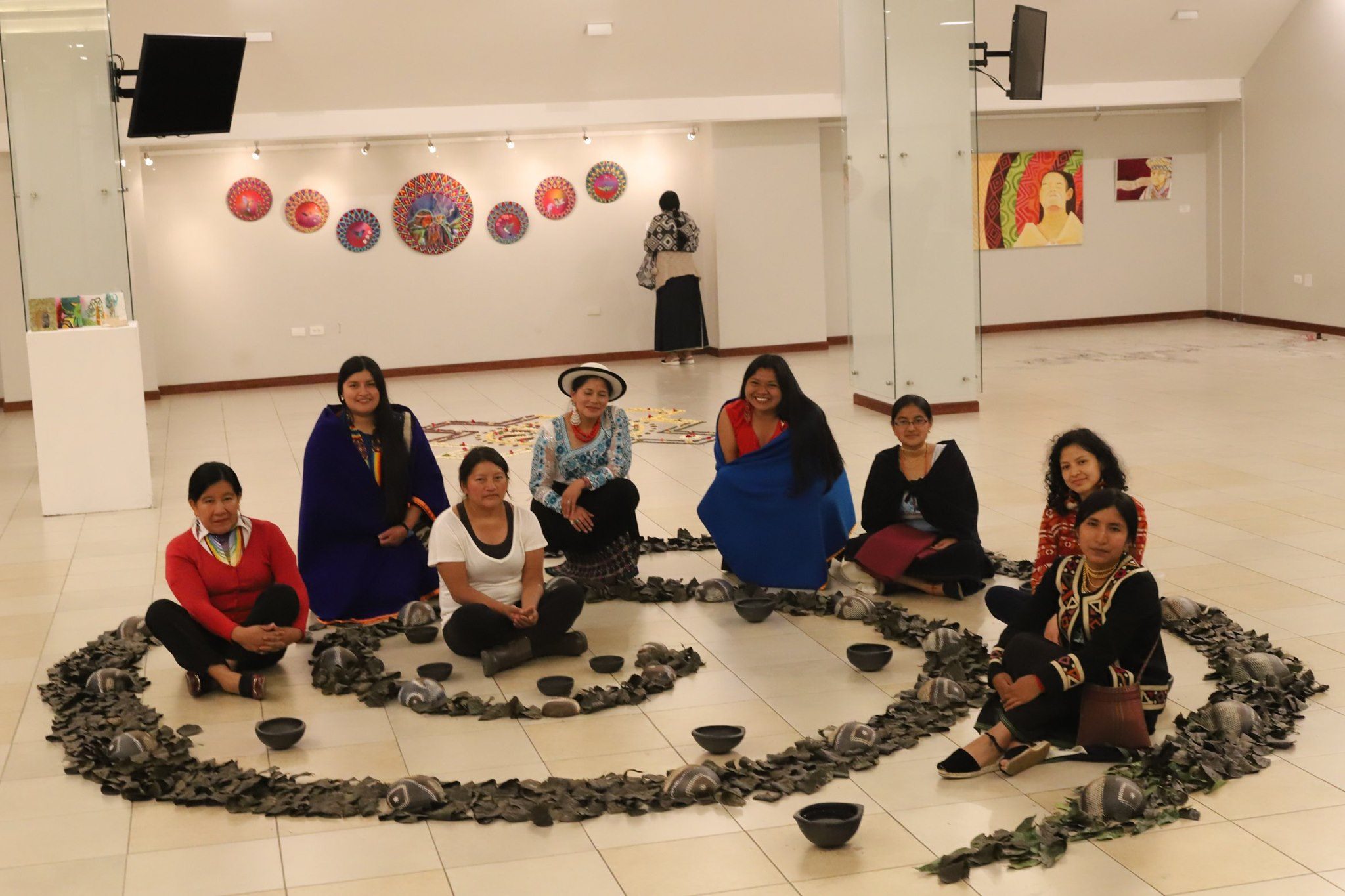
Shuk Makilla: 1st Encounter of Women Artists from Indigenous Peoples and Nations of Abya Yala.
Courtesy: Warmi Muyu.
Let's talk about the book you did, what were your motives and the links with the artists involved?
GR: We did the book two years ago, it's called Shinami Kawsanchik. Viviendo en armonía con la naturaleza. It was at the time of the pandemic, when we could not have face-to-face events, so we thought it was important, within these digital spaces, to teach Andean problems or concepts and worldviews. For that, we participated in the State fund and we managed to win it. We invited several artists, both indigenous and mestizo, who are also activists and are linked to the processes of defending nature: Angie Vanessita, Angélica Alomoto, Milena Cabrera, and myself. Each one of them raised several themes that we wanted to capture within this defense of nature, so there was the work of agricultural festivals, the work of knowledge, ancestral medicine, and also much related to the jungle. The book is almost entirely illustrated, it has a little text but more illustrations of our experiences in this knowledge and all the symbolism of orality. It is online, you can find it with the same name and browse through it, see the various techniques we work with there, digital illustration mixed with manual illustration, watercolor, and painting.
I'd also like to talk a bit about how you manage having your own work, being part of the collective and, at the same time, having your own academic backgrounds. How do you see yourselves between these three worlds?
GR: I think everything has always been somehow intertwined. Perhaps, what calls us to question traditional education is that it has always been imposed from domination, from the imposition of knowledge. So perhaps it is a question of turning it around to educate from authenticity, from love, from sensitivity. Of course, we come from a school where we were taught in that way, from classical art universities, but when we allow ourselves to open up to this community environment and begin to learn from them, and when we teach, it is also a way of sharing, it generates a kind of exchange. I think that's what education has always been about: exchange. Currently, being in the city, it has always been my interest to approach the community, to understand it also from the city. I have met many artist collectives and I have belonged to several, and it has always been a matter of how to help each other. I think that keeping status as collective has also been a way of reinforcing future actions: they always look for you because you are linked to these activist movements, women's movements, so they always go hand in hand.
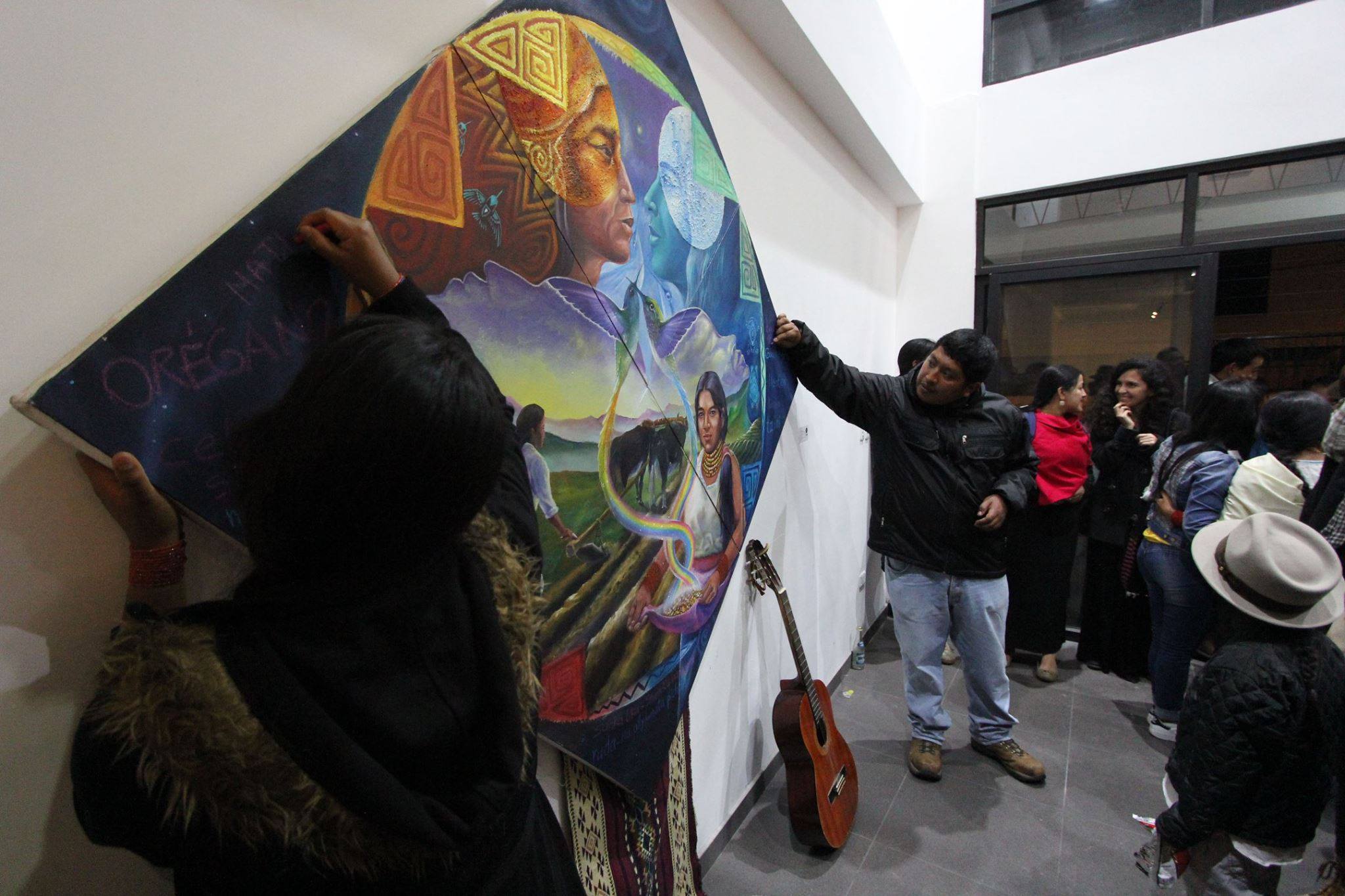
Courtesy: Warmi Muyu.

Courtesy: Warmi Muyu.
MK: I have been linked to academia because it seemed important to me that all the debates we have had in collectives, to write them down, to theorize them, because I believe that as artists of native peoples and nationalities it is also our responsibility. When I studied, there was no information about the art of indigenous peoples and nationalities. In the history of art, you can only find pre-Columbian art, but not the debates that are currently being developed; you cannot find research on how art was understood in Abya Yala. So I think that, although there is a vacuum, as artists, since we are here, we also have the responsibility to research the art in our villages, and for that reason, I have been linked to academia.
Both are in spaces that are somehow conflicting: the museum, on the one hand, with its pretension of telling history, and academia that constructs history, so their role is also one of resistance, of how to rethink what is written or how to write what is not written. How do you look at the memory of the artists of generations such as those of your parents or grandparents? Because there are gaps and it would seem that the presentation of the indigenous remains frozen in the past.
GR: I find interesting a phrase that a colleague of the collective taught me where this is mentioned. They say that our grandparents fought for the land, our parents fought for education and we are fighting for our knowledge to expand; so, it is a struggle from generation to generation and there are still things to show, things pending, things to resist. As you mention, art has also been a form of resistance and to make our knowledge endure.
There has always been the issue of giving back what they defended, what still exists—because not everything is in history, it still exists—: we still live with the Apus, with ceremonial sectors, we are full of mountains, these are things that exist. It has never been lost, and now we have the power to say it: this exists. Well then, let's defend it! Let's continue with this knowledge.
